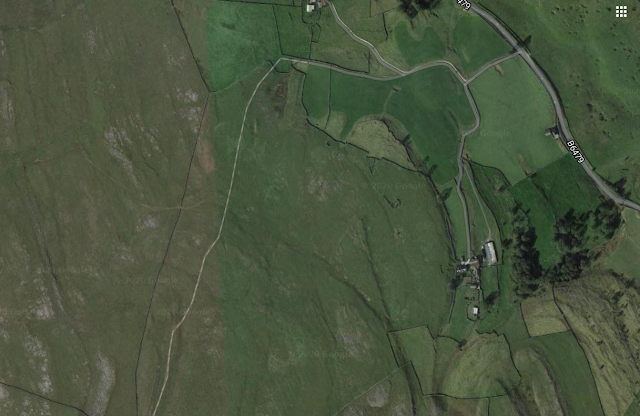If anything awakens the sleepy nature of an rural isolated community, it is the finding of a body in that otherwise peaceful area, especially where a mystery surrounds its finding and identity. One of the more well known and often referred to one, is the pack woman's grave in the Langdale Valley of Lakeland, now a mecca to be visited by walkers of the valley and summits of the Lake District, especially following a reference in the famous Wainwright guide books of the 214 similarly named summits. The pack woman's grave is denoted by a cross near Rossett Gill; although a location of some antiquity, it is believed that she was merely overcome by the weather, with no marks of violence on her remains. Over many years, it would not be surprising that other remains were discovered at intermittent times, across the nation.
One such event, in terms of geography, occurred in North Yorkshire, but surprisingly is not referred to now. On the afternoon of Wednesday 9th September 1936 a minute search was made of the area of the limestone plateau between Clapham and Selside, where the famous clints were to be found and taken for the decoration of alpine gardens. This track skirts the southern flank of the well known mountain of Ingleborough and is part of the national trail, the 205 mile Pennine Bridleway which runs from the Derbyshire hills to Kirkby Stephen in Cumbria. A Mr. R. Richardson had been collecting these clints for his employer, Jack Preston, to sell to gardeners for such decoration, and a few months previous he had noticed some bones, covered by limestone rocks, in a hollow in the clints, near the pack-horse track. These were in the area of Mr. T. Newhouse's farm, South House, near Horton-in-Ribblesdale.
 |
| Plan view of the area with the Pennine Bridleway going through the Clints towards Selside, South House to the right. |
 |
| Ordnance Survey plan of the area. The red flag denotes the general area where the skeletal remains were believed found, |
Mr. Richardson regularly found sheep bones during the course of his searches and assuming these were such remains, he left them. That afternoon he decided to remove the covering rocks and take out the bones, intending to remove the clints for his employer when he realised that the skull was human. The bones were very weathered, with neither flesh nor clothing attached at all. Later in the evening he informed his employer and both went along to Settle police station and reported the matter. Superintendent Elliott and Sgt. Turnbull immediately went to the area and confirmed that the remains were indeed human and these were then conveyed to Settle Police Station. The bones had been in a cleft in the clint that was 7ft 6ins in length and 18 inches wide, and being partly covered with limestone boulders; it was suggestive of a coffin.
The scene where they were discovered, and the bones themselves, were inspected by Mr. Tot Lord, a well known Settle antiquary, who confirmed that in his opinion they were of some considerable age, likely centuries old. They were bleached and had suffered in condition from the wind and rain. He believed them to be the remains of a woman and she had suffered from fractures both to her arm and skull. The best theory was that she had been waylaid on the trail, likely in the days of pack horses, and had been buried in the clint. It was decided that no inquest was necessary, due to the historic nature of the death; it is unclear where her unidentified remains were buried.
The strange event seems to have been once again forgotten. In reality, such a route back in 1936, would have been used mainly for local travelling between these isolated communities; war was soon to follow, which would understandably turn all eyes away from such small and unrelated events. However, such incidents, if recalled, are now points of interest to those seeking recreation and exercise in more modern times of leisure activities and are a 'must' to refer to as any party passes the path of such tragedy, especially where violence likely brought an end to a life.
This comment has been removed by a blog administrator.
ReplyDelete